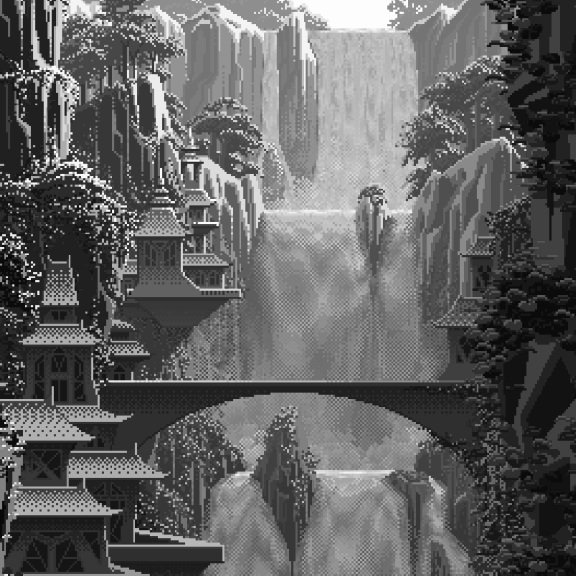Weekend download: Living Worlds
Image: Mark Ferrari
The iPad in my kitchen is a window to another universe. Every month this window opens onto another chapter of a story which follows a brave adventurer as they venture deeper into a new world they arrived at through a mysterious rift. The world is beautiful, fascinating and dangerous, filled with mysterious species who live on waterfalls or wonderous caverns full of crystals and toxic sea creatures. I can’t help but feel sorry for this adventurer because I know this story is circular; they enter this new world in January and leave it in December, only to find themselves back again for another year. This is Living Worlds, once a digital calendar and now an app with Art by LucasFilm visionary Mark Ferrari.
If you’ve played adventure games in the 1990’s you will have inevitably come across Mark’s work. He provided background graphics and animations for Zak McKracken and the Alien Mindbenders, Loom, and The Secret of Monkey Island. His art style is as recognizable as it is timeless, and it loses none of its depth and charm in a modern application such as Living Worlds. Before Living Worlds, however, there was Seize the Day; a digital planner which featured Mark’s 8-bit art and animations. 25 years after the release of Seize the Day, the original developers, Ian Gilman and Joseph Huckaby, released the calendar as an app keeping Mark’s original artwork intact.
Image: Ian Gilman
One of the most fascinating aspects of Mark’s animations is how they were made; using a technique in which stored palettes were cycled to achieve what appears to be a moving image. This technique is used everywhere in Living Worlds, to animate everything from waterfalls to auroras. Of course with today’s technology, these types of workarounds aren’t needed but back in the 90’s, Mark’s color-cycling technique helped make it possible to put games on a floppy disc. You can read more about this incredible technique in this Q&A and see it in action in this live demo of the original images.
Fast forward to 2022 and these animations feel right at home on mobile, perhaps as a form of reckoning after the gaming industry largely abandoned 2D art. Mark’s artwork is so rich and the worlds are so detailed that none of it feels a moment out of date. There’s something that feels very right about the slow passage of time in Living Worlds, regardless of if you’re setting it up on an old iPad in the kitchen or are checking it on your mobile from time to time. Every time you look at it, you’ll be seeing a different image - a change in the weather, a shift from morning to night and the passage of seasons. At some point you’ll see a part of this fantasy world that you’ve seen a year prior, and it’ll remind you that a year has passed. Perhaps it’ll cause you to pause and reflect as I did when I first saw April’s image staring back at me after a full year. Maybe we’re not getting any younger, or maybe, like the adventurer in Living Worlds - or Mark Ferarri’s art in a new age - we always find ourselves back where we started.



